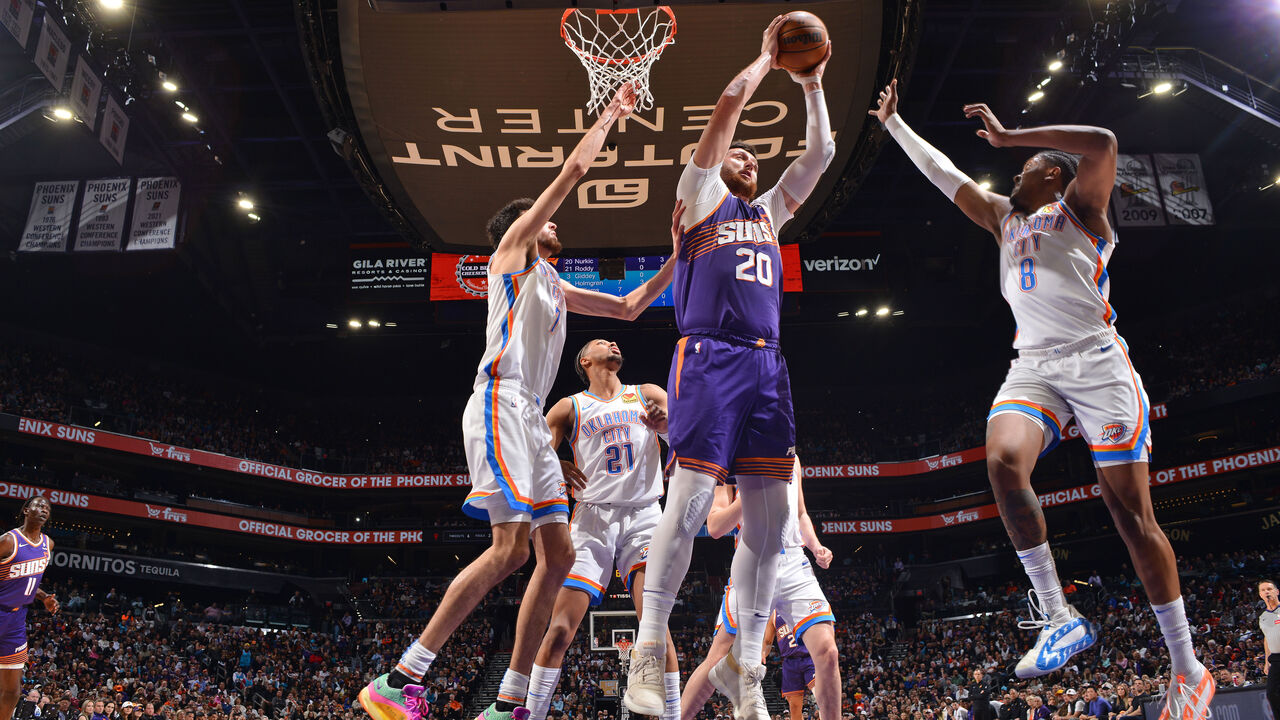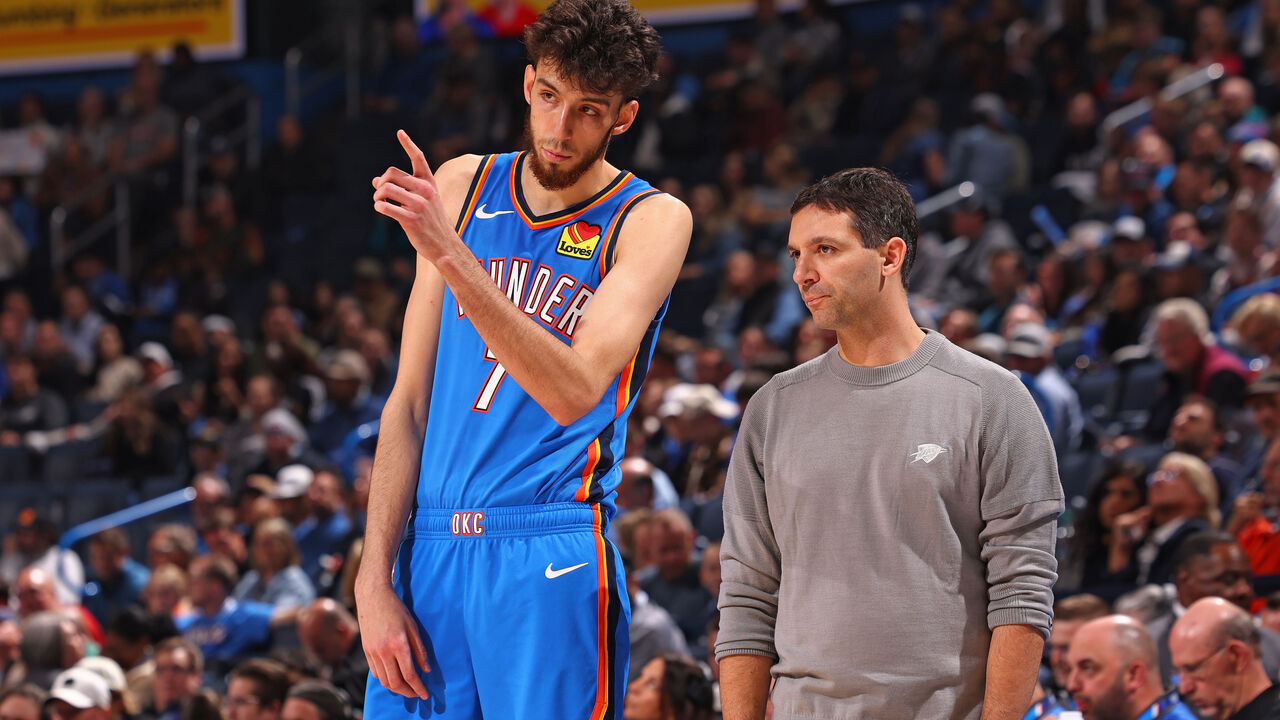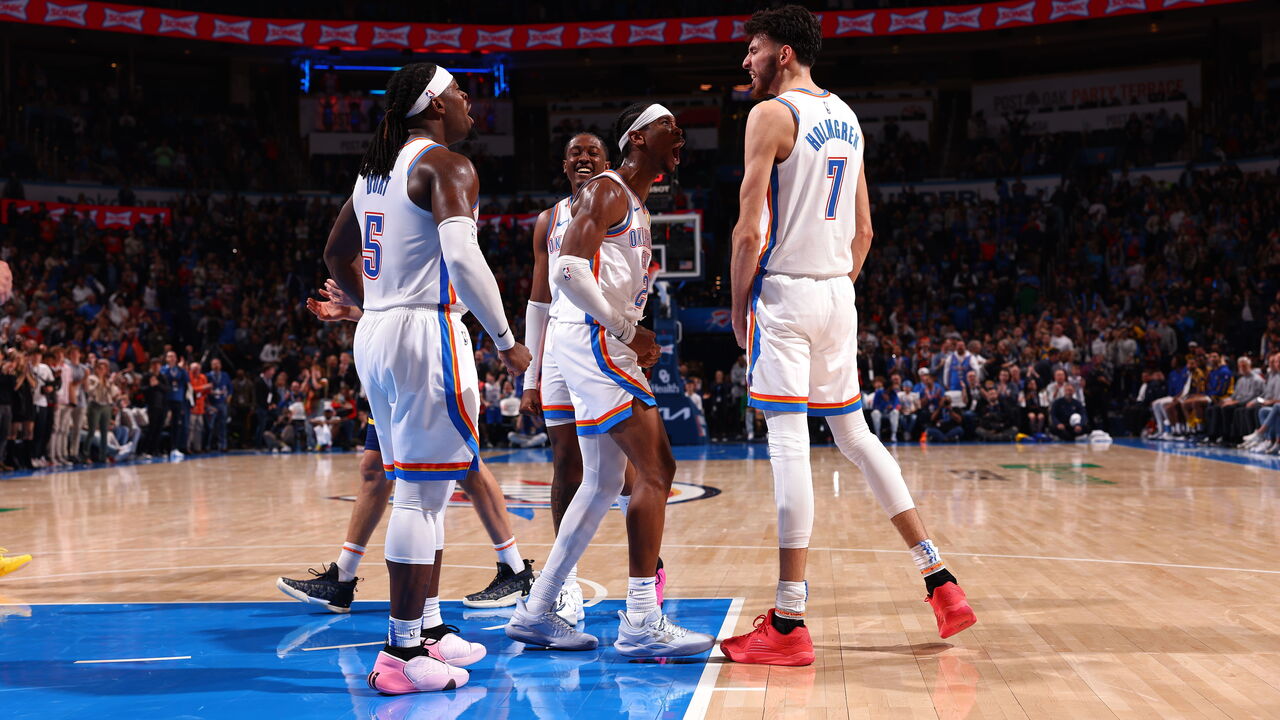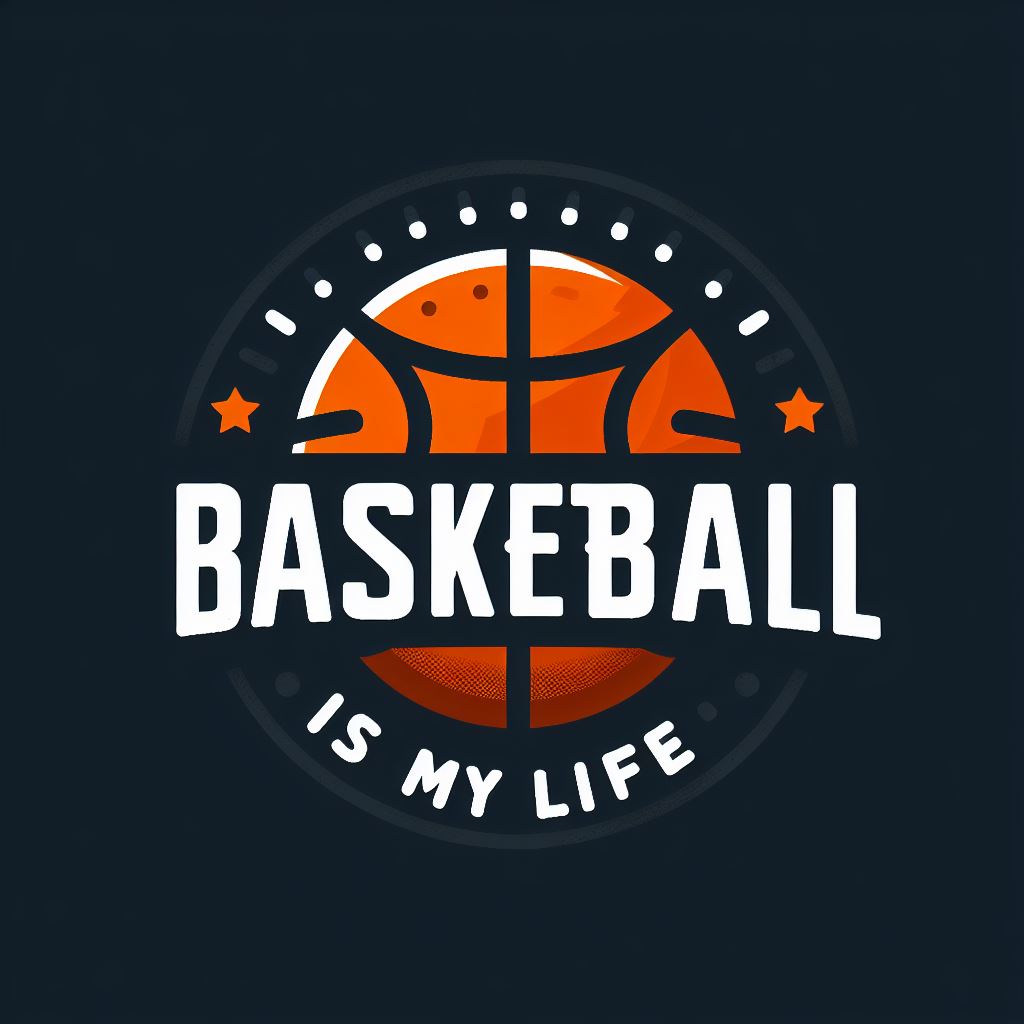When the Oklahoma City Thunder are finally eliminated from the NBA playoffs this spring, many pundits will lazily attribute it to inexperience. After all, weighted by minutes played, the Thunder are the best in the league. the youngest team, with several rotation players who have yet to play in a single postseason contest.
But first-place Oklahoma City’s fatal flaw can’t be measured in years or games played. The Thunder’s eventual demise can probably be explained in simpler basketball terms: They’re just not big enough.
From a literal size perspective, the young Thunder entered the season slightly bigger that average, and the average height of the team’s current 10-man rotation — after acquiring Gordon Hayward and welcoming Jaylin Williams back from injury — remains a perfectly average 6-foot-6 (and change). Plus, Rookie of the Year candidate Chet Holmgren is 7-foot-1, so Oklahoma City’s Achilles heel doesn’t exactly jump off the page when you peruse his roster or study his formula.
Shai Gilgeous-Alexander’s league-leading 24 drives per game ensure the Thunder are consistently hitting the paint, and their top-three offense is designed around those drives. Jalen Williams is already a hyper-efficient three-level scorer. OKC comes in and converts from the rim at pretty average rates, and Holmgren has largely completed the puzzle on both ends. The big man showed himself capable of spacing the floor and protecting the rim while providing a team that often relied on guard – or “small-small” – check plays with a control option more traditional.
But after Holmgren, the next tallest players in head coach Mark Daigneault’s playoff rotation will likely be 6-foot-9 Jaylin Williams and an oversized 6-foot-8 guard in Josh Giddey. And for all the shifting power that Holmgren’s lanky, lanky game provides, the wiry 21-year-old risks being pushed around by the league’s veritable juggernauts. He also cannot be present on the field at all times.
Although it has plagued them all season, the Thunder’s lack of size was most glaring in back-to-back games in Phoenix and Los Angeles this week. On Sunday, Suns center Jusuf Nurkic pulled down 31 rebounds, a franchise record for a team that once employed lead Charles Barkley. Twenty-four hours later, Oklahoma City had no answer for Lakers All-Star Anthony Davis, who had 24 points and 12 rebounds on 7-of-12 shooting. The ease with which Davis went about his business against Holmgren and company says even more than these numbers ever could.

This lack of weight manifests itself most clearly on the glass, where the Thunder’s otherwise stout defense bleeds second-chance opportunities. 29th-ranked Oklahoma City’s defensive rebounding rate of 68.6 percent falls between the rates of teams that have won 10 and 17 games. Among the eight worst defensive rebounding teams, the Thunder are the only one currently ranked among the top six seeds. Only the Wizards give up more second chance points.
With Holmgren as the anchor, OKC keeps teams out and holds opponents to the lowest completion percentage on the field, resulting in a top-five defense that appears playoff-proof surface playoffs. But it’s in the playoffs that flaws are ruthlessly exposed and exploited.
Between all the extra shots allowed on rebounds and a defensive system that gives up 3-point attempts, the expected effective completion percentage of the Thunder’s opponents puts OKC 21st in defense, according to Cleaning The Glass. Additionally, since the NBA expanded to 30 teams 20 years ago, the only teams to win championships with bottom-10 defensive rebounding rates were the 2013 Heat and the Warriors in 2017 and 2018 – some of the most talented teams ever assembled.

So which Western playoff teams are best equipped to exploit the Thunder’s most apparent flaw? Well, almost all of them.
With two 7-footers and a propensity to take — and score — 3-point baskets from the corners, the healthy Timberwolves fit the bill, as the Thunder gives up the highest frequency of corner threes. However, a knee injury sideline All-Star big man Karl-Anthony Towns for at least a month.
With Nurkic in the middle and shooters all around him, the Suns pose a clear threat. Ditto for the defending champion Nuggets, who own the sixth-highest offensive rebounding rate and feature Nikola Jokic at center, although the reigning Finals MVP is a universal nightmare.
Domantas Sabonis, the league’s leading rebounder for a second straight year, can change a game for the trigger-happy Kings. Clippers center Ivica Zubac ranks seventh in individual offensive rebounding rate, while Los Angeles is one of the best shooting teams in the league. With the size of the frontcourt and a top-eight mark in second-chance points, a Pelicans team featuring Jonas Valanciunas and Zion Williamson would surely cause headaches for the Thunder.
But perhaps the two teams Oklahoma City should fear the most are the Warriors and Lakers.
After demolishing Los Angeles in November, the Thunder lost three straight games to Davis’ Lakers between December and March. No team has beaten OKC more often this season.
As for the Warriors, Golden State is actually the smallest team in the league and starts 6-foot-6 Draymond Green at center. But make no mistake: The Warriors have the third-best offensive rebounding rate in the league and Steph Curry’s club has the shooting needed to punish Oklahoma City’s scheme. The Thunder won the season series 3-1, but in the only game where Gilgeous-Alexander, Holmgren, Curry and Green collectively took the floor, the Warriors grabbed 24 offensive rebounds – a rate of 46.2% – and dominated the Thunder. by 42 points on 3-point territory. Oklahoma City survived for an overtime victory, but you can understand why the Thunder might want to avoid this game in April.
If the Thunder remain a top-two seed and the Lakers and Warriors remain play-in teams, either of these veteran-laden teams could present first-round challenges for OKC.

“We need to finish our breakfast before we start acting like we’re about to do something,” general manager Sam Presti said during media day. Perhaps the surest sign that Oklahoma City has already devoured its first meal is the team’s shift from a feel-good story to a nit-picking contender. Such is life when playing at a 57-win pace led by an MVP favorite.
Of course, the Thunder remain a feel-good story and stay ahead of schedule. They have recorded 44 wins while the second and third youngest teams in the league have totaled 23 together. The future looks even brighter today than at the start of this season, with more trade capital at their disposal than any of their already inferior opponents. .
These trading tokens can be used over time to address these size issues, acquire another star, and answer any other questions that may arise during the team’s journey to the top of the basketball mountain.
But if they don’t reach that peak this year, you’ll know why.
Joseph Casciaro is the primary content producer for theScore.

